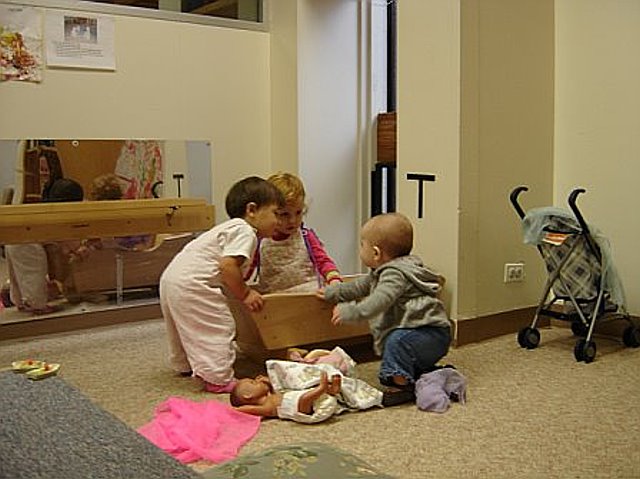Infant Classroom
2 months to 24 months

TEACHERS AS CAREGIVERS
As teachers of very young children, we are involved in caregiving routines throughout the day. We simultaneously perform the roles of teacher and caregiver by developing relationships through daily routines and capitalizing on opportunities to facilitate growth. We place a special importance on learning to trust one another while supporting children to be independent.
Key caregivers focus on developing relationships with particular children and families. We also practice continuity of care when working with infants, maintaining relationships throughout the day, especially during transitions. In the classroom, we practice the "watch, wait, and wonder" approach in coordination with responsive teaching, providing the space for the children to initiate activities on their own as we observe the minute details of their development in order to discover how to help them to take the next steps.
CURRICULUM
The infant room uses a child-led, emergent, and integrated curricular approach. Most of the materials provided and the activities introduced by the teachers are connected to the children's developmental needs and/or interests. By observing the children, the teachers make decisions about setting up the classroom, organizing activities, or introducing new ideas based on what the children need and in partnership with their families. Through daily routines, infants learn important socio-cultural skills like learning to work collectively and forming trusting relationships with their caregivers and peers.
RATIO OF ADULTS TO CHILDREN
There is a maximum of eight children in the room. There are at least three adults present, one of whom is a head teacher.
DAILY SCHEDULE
In the infant room, we follow the individual needs of each child. We begin the day with free play. Throughout the morning, we individualize care to provide snacks, napping, and activities for the children. We have an outing once a day to a local playground or our indoor play-space. The older children eat lunch together before taking a nap in the early afternoon. The late afternoon is similar to the morning but tends to include some quieter activities as the children are waking from nap and preparing to go home. Throughout the day, snacks, meals, napping, diapering, and toileting are all based on the individual child's needs.